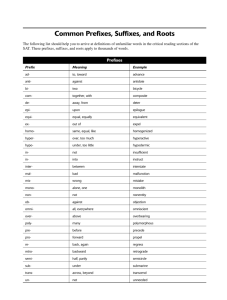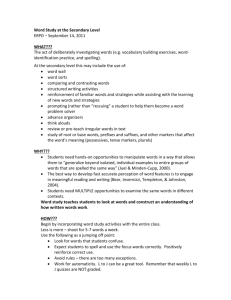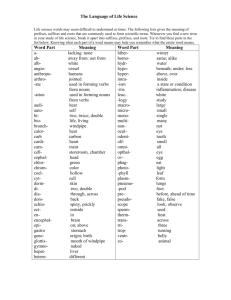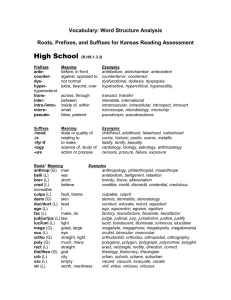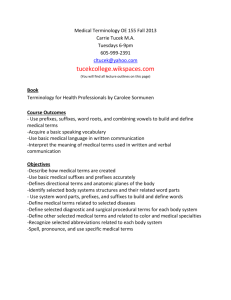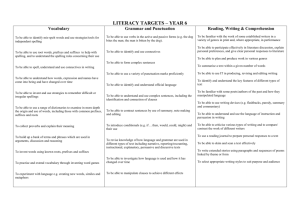Course Form
advertisement
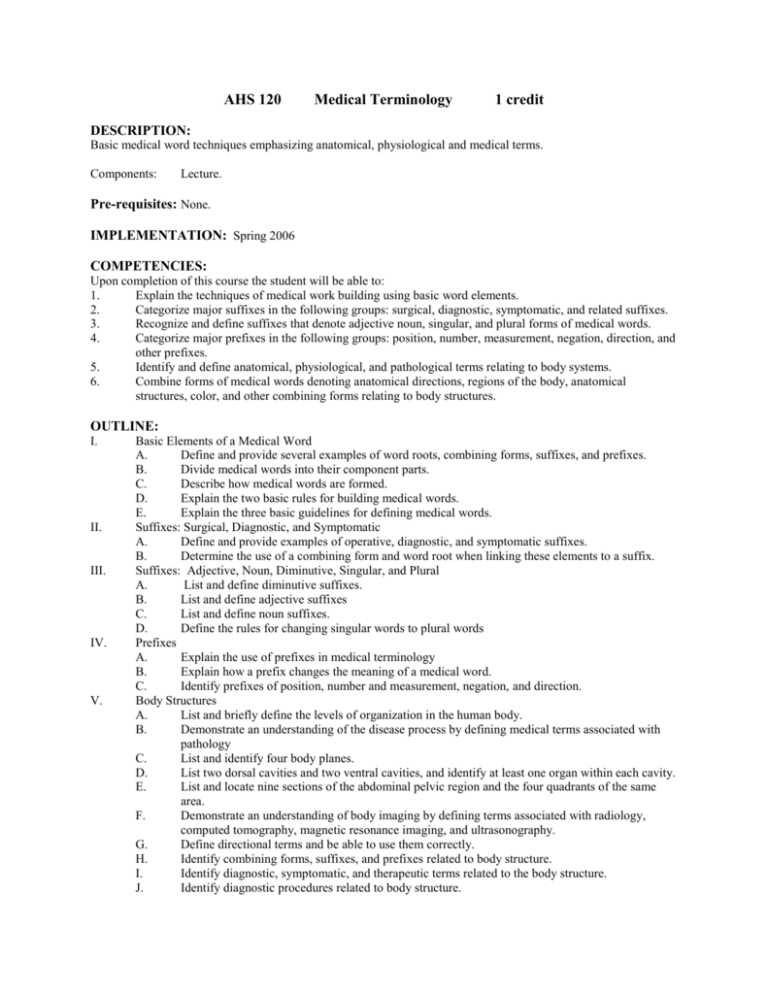
AHS 120 Medical Terminology 1 credit DESCRIPTION: Basic medical word techniques emphasizing anatomical, physiological and medical terms. Components: Lecture. Pre-requisites: None. IMPLEMENTATION: Spring 2006 COMPETENCIES: Upon completion of this course the student will be able to: 1. Explain the techniques of medical work building using basic word elements. 2. Categorize major suffixes in the following groups: surgical, diagnostic, symptomatic, and related suffixes. 3. Recognize and define suffixes that denote adjective noun, singular, and plural forms of medical words. 4. Categorize major prefixes in the following groups: position, number, measurement, negation, direction, and other prefixes. 5. Identify and define anatomical, physiological, and pathological terms relating to body systems. 6. Combine forms of medical words denoting anatomical directions, regions of the body, anatomical structures, color, and other combining forms relating to body structures. OUTLINE: I. II. III. IV. V. Basic Elements of a Medical Word A. Define and provide several examples of word roots, combining forms, suffixes, and prefixes. B. Divide medical words into their component parts. C. Describe how medical words are formed. D. Explain the two basic rules for building medical words. E. Explain the three basic guidelines for defining medical words. Suffixes: Surgical, Diagnostic, and Symptomatic A. Define and provide examples of operative, diagnostic, and symptomatic suffixes. B. Determine the use of a combining form and word root when linking these elements to a suffix. Suffixes: Adjective, Noun, Diminutive, Singular, and Plural A. List and define diminutive suffixes. B. List and define adjective suffixes C. List and define noun suffixes. D. Define the rules for changing singular words to plural words Prefixes A. Explain the use of prefixes in medical terminology B. Explain how a prefix changes the meaning of a medical word. C. Identify prefixes of position, number and measurement, negation, and direction. Body Structures A. List and briefly define the levels of organization in the human body. B. Demonstrate an understanding of the disease process by defining medical terms associated with pathology C. List and identify four body planes. D. List two dorsal cavities and two ventral cavities, and identify at least one organ within each cavity. E. List and locate nine sections of the abdominal pelvic region and the four quadrants of the same area. F. Demonstrate an understanding of body imaging by defining terms associated with radiology, computed tomography, magnetic resonance imaging, and ultrasonography. G. Define directional terms and be able to use them correctly. H. Identify combining forms, suffixes, and prefixes related to body structure. I. Identify diagnostic, symptomatic, and therapeutic terms related to the body structure. J. Identify diagnostic procedures related to body structure. VI. K. Identify surgical and therapeutic procedures related to the body structure. L. Define the abbreviations related to body structure. Body Systems: Structure, Function, Diagnostic, Therapeutic and Pharmacology A. Integumentary System B. Gastrointestinal system C. Respiratory System D. Cardiovascular System E. Blood, Lymph, and Immune System F. Muscoloskeletal System G. Genitourinary System H. Endocrine System I. Reproductive System J. Special Senses Dates of Actions: Approved: March 2001 Revised: May 2005

